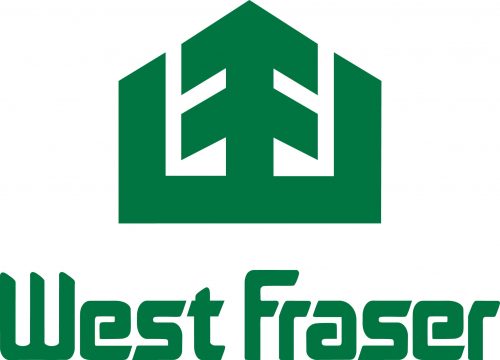
West Fraser Timber Co. Ltd. today reported the second quarter results of 2021.
The results of operations presented and discussed below include those of Norbord from Feb. 1, 2021, the date of the completion of the acquisition of Norbord. All dollar amounts are expressed in U.S. dollars unless noted otherwise.
Second quarter highlights
- Sales increased 61 per cent from the prior quarter to $3.779 billion
- Earnings increased to $1,488 million, or 39 per cent of sales, from $665 million in the prior quarter
- Adjusted EBITDA increased to $2.160 billion from $1.008 billion in the prior quarter
- Repurchased $233 million of WFG shares for cancellation under normal course issuer bid (NCIB)
- Increased authorization of the NCIB to 9.58 million shares of WFG
- Redeemed Norbord Notes and retired $665 million of debt
- Finished the quarter with liquidity at $3.392 billion and net debt to total capital ratio of (28)%
- Initiated a CAD$1.0 billion substantial issuer bid (SIB) subsequent to quarter-end
Operational results summary
West Fraser’s lumber segment generated operating earnings in the quarter of $955 million (Q1-21 – $607 million) and Adjusted EBITDA of $994 million (Q1-21 – $646 million). Adjusted EBITDA increased due to higher lumber prices and higher shipment volumes that recovered from the seasonal railcar shortages in Canada and a period of extreme winter conditions in the U.S. South in the previous quarter. Adjusted EBITDA was negatively affected by higher manufacturing costs due in part to increased SPF log costs, and to a lesser degree, increased SYP log costs, higher expenditures related to increased employee costs in the U.S. South associated with managing through COVID-19 impacts and other input cost inflation.
West Fraser’s NA EWP segment generated operating earnings in the quarter of $1,017 million (Q1-21 – $299 million) and Adjusted EBITDA of $1,106 million (Q1-21 – $353 million). Segment operating earnings and Adjusted EBITDA in the prior quarter were decreased by a one-time charge of $86 million related to inventory fair value adjustments from purchase price accounting. The contribution of a full three months from West Fraser’s OSB operations from the Norbord acquisition, higher plywood pricing and recovery of plywood shipment volumes from the weather-related railcar shortages experienced in the previous quarter positively impacted Adjusted EBITDA for the quarter. Higher log costs from increased B.C., Alberta and Ontario stumpage rates and higher resin costs negatively impacted Adjusted EBITDA.
Outlook
Western Canadian wildfires
Western Canada is presently facing extreme heat and dry ground conditions, resulting in a significant number of wildfires. As a result, the province of British Columbia declared a provincial state of emergency on July 20, 2021. The wildfires are affecting access to logging areas in some of West Fraser’s operating areas and impacting transportation networks the company relies on to move products. This has resulted in temporary suspensions of production due to raw material shortages, evacuation orders and difficulties in moving our finished product by truck and rail. At this time, West Fraser cannot estimate when the situation will be alleviated or estimate the impact on production and shipments.
Markets
The most significant uses for West Fraser’s lumber and OSB products are residential construction, repair and remodelling, and industrial applications. Low mortgage rates, low volumes of homes available for resale, favourable demographics, increasing acceptance of remote working and the underlying housing construction deficit due to several years of underbuilding appear to be positively influencing the demand for new housing in North America. An aging housing stock and repair and renovation spending should also continue to drive lumber, plywood and OSB demand.
Canadian lumber exports to Asia may be impacted by competition from suppliers in other countries and current North American pricing will continue to impact export markets. Lumber exports are also expected to be negatively impacted in the near-term by wildfires that in some cases are impeding rail access to shipping ports.
Operations
In order to address the wildfire situation in Western Canada (including evacuation alerts and orders, and a provincial state of emergency declaration), transportation challenges, log cost and availability, variability in short term demand and overall inventory levels, West Fraser may from time to time adjust activity levels at its operations. Starting in the second half of June, the company has been making such adjustments to activity levels at its operations to address the current situation and will continue to do so as required. As a result, West Fraser expects that its production and shipments in the second half of 2021 will be impacted. The extent of this impact will be dependent on the severity of the wildfire situation, any state of emergency or evacuation orders issued by governments and resulting impacts to operations, log cost and availability, fluidity of transportation and overall demand for our products.
In addition, West Fraser’s operations and results could be negatively affected by the availability of labour due to the continuing impacts of COVID-19, adverse weather conditions in our operating areas, intense competition for logs in the B.C. Interior, and elevated stumpage fees. On Jan. 1, 2021, stumpage rates increased in B.C. due to the market-based adjustments related to lumber prices and purchase log costs. A further increase in B.C. stumpage rates occurred on July 1, 2021 and West Fraser expects a further increase in B.C. stumpage on Oct. 1, 2021. In Alberta, stumpage rates have started to decline from levels earlier in the year, as they are closely linked to the price of lumber and OSB and respond rapidly to changes in lumber and OSB prices. West Fraser expects the SYP log cost to remain relatively steady in the third quarter after moderating in the second quarter of 2021.
Norbord integration update
The integration of the Norbord business is still in the early stages and remains a company focus. West Fraser remains on track to achieve targeted annual synergies of $61 million over the next 12-18 months.
Print this page
